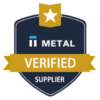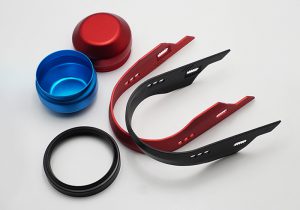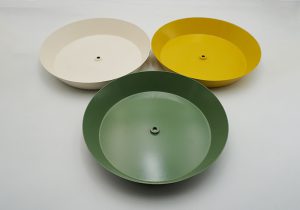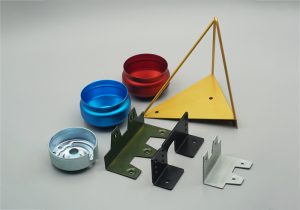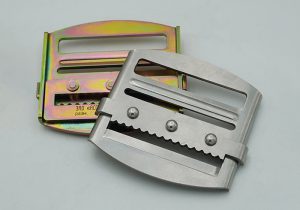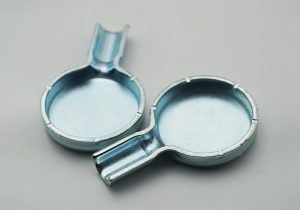Surface Treatment
Metal surface treatment is a process used to improve the surface properties of metal parts, including durability, appearance and corrosion resistance. There are a variety of surface treatment processes including electroplating, anodizing, powder uncoated and hot dip galvanizing.These treatments are widely applied in industries such as automotive, aerospace, electronics, and construction. Specific examples include the chrome plating of car parts, anodizing aluminum aircraft components, and powder-coating metal furniture to prevent rust. These processes help to ensure longevity and quality in various applications.
Metal Surface Treatment Service | Professional OEM Factory
Xinjiuxinji has been engaged in custom metal surface treatment, providing a comprehensive range of processes such as electroplating, anodizing, powder coating and galvanizing. We have extensive experience in the surface treatment of simple and complex metal parts. We provide cost-effective solutions to our customers’ product needs and meet stringent industry standards in the automotive, electronics, aerospace and construction industries. Our state-of-the-art equipment ensures precision, consistency and efficiency in all processing, backed by advanced automation and rigorous quality control systems. This not only shortens the processing time but also optimizes the production cost, making Xinjiuxinji integrated as a reliable, high-quality surface treatment solution partner.
Common Surface Treatments: Meet Different Project Requirement
Electroplating: Coats metal with a thin layer of another metal, like gold or nickel, for durability and aesthetics.
Anodizing: Forms an oxide layer on metals like aluminum, increasing hardness and corrosion resistance.
Galvanizing: Zinc-coating steel, commonly through hot-dipping, for rust prevention.
Powder Coating: Applies a dry powder cured under heat, creating a resilient finish.
Passivation: Chemically removes contaminants on stainless steel to boost corrosion resistance.
Phosphate Coating: Adds a phosphate layer for rust resistance and serves as a paint primer.
Black Oxide Coating: Produces a thin black layer on ferrous metals, reducing glare and offering mild protection.
Chemical Conversion Coating (Alodine): Common for aluminum, enhancing corrosion resistance and paint adhesion.
Hot-Dip Coating: Coats metal by dipping it in molten zinc or aluminum for corrosion protection.
Electropolishing: Smooths and brightens metal surfaces, removing imperfections and enhancing corrosion resistance.
Physical Vapor Deposition (PVD): Applies a thin, hard coating, like titanium nitride, improving wear resistance.
Chemical Vapor Deposition (CVD): Forms hard coatings via chemical reaction, often used on cutting tools.
Hard Chrome Plating: Thick chrome layer for heavy-duty applications requiring wear resistance.
Nitriding: Infuses nitrogen for surface hardening without affecting the core, used in gears.
Carburizing: Adds carbon to steel surfaces, enhancing hardness for load-bearing applications.
Thermal Spraying: Sprays molten material onto surfaces, creating thick, durable, heat-resistant coatings.
Uncommon Surface Treatments: Special Project Requirement
Vibratory Finishing: Uses abrasive media to polish and deburr parts in a vibrating tub.
Shot Peening: Uses spherical particles to create compressive stress, enhancing fatigue resistance.
Zinc Plating: Adds a thin zinc layer for corrosion protection, commonly on bolts and screws.
E-Coating (Electrophoretic Painting): Deposits paint uniformly using electric current, ideal as a primer.
Laser Cladding: Fuses powdered material onto a surface using a laser, improving wear resistance.
Brazing: Joins metals with a filler at high heat, strengthening bonds and enhancing surfaces.
Electroless Nickel Plating: Deposits nickel without electric current, offering uniform corrosion protection.
Sand Blasting: Abrasive blasting that cleans and prepares surfaces for further treatments.
Plasma Nitriding: A nitriding process that uses plasma to achieve high surface hardness.
Manganese Phosphate Coating: Adds a dark phosphate layer for lubricity and rust protection in machinery.
Teflon Coating: Applies a Teflon layer to reduce friction, often used in cookware and bearings.
Aluminum Chromating: Adds a chromate layer for corrosion resistance and as a paint base.
Ceramic Coating: A layer of ceramic-based material providing thermal resistance and hardness, ideal for engine components.
These metal surface treatment serve industries such as automotive, aerospace, construction, and electronics, offering solutions for corrosion resistance, aesthetics, and enhanced durability across various applications.






 +86 18892239158
+86 18892239158
